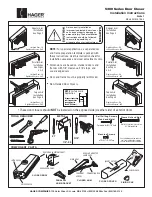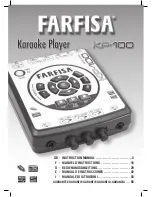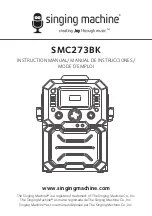
19
GB/IE/NI/CY/MT
z
Setting the wire feed
In order to generate a constant arc, the set-
ting wheel for the wire feed
8
can be used
to fine-tune the wire feed. It is recommended
to use a setting in the middle range to start
with, and then reduce or increase the speed
as required.
The necessary welding current depends on
the welding wire diameter used, the material
thickness and the desired penetration depth.
Similarly, the gaps to be bridged between
the workpieces to be welded must be obser-
ved.
Overload protection
The welding device is protected against over-
heating by means of an automatic protection
device (thermostat with automatic restart).
The protective device interrupts the overload
of the current circuit and the yellow overload
protection control lamp
6
illuminates.
Allow the device to cool down (approx.
15 minutes) after activation of the protec-
tion device. As soon as the yellow over-
load protection control lamp
6
goes out,
the device is ready for operation again.
Welding mask
HEALTH HAZARD!
If you do not use the welding mask, harmful
UV radiation and heat emitted by the electric
arc could damage your eyes.
Always use the welding mask for welding
work.
z
Welding
RISK OF BURNS!
Welded workpieces are very hot and can
cause burns.
Always use pliers to remove welded, hot
workpieces.
Please proceed as follows once
you have electrically connected the
welding device:
Connect the earth cable to the workpie-
ce that is to be welded using the earth
terminal
4
. Ensure that there is good
electrical contact.
The area to be welded on the workpiece
must be free of rust and paint.
Choose the desired welding current and
wire feed depending on the welding wire
diameter, material thickness and desired
penetration depth.
Switch the device on.
Hold the welding mask
23
in front of
your face and guide the torch nozzle
9
to the position on the workpiece that is to
be welded.
Press the torch button
11
, in order to ge-
nerate an arc. Once the electric arc is
burning, the device feeds wire into the
weld pool.
If the welding lens is big enough, the
torch
10
is slowly guided along the desi-
red edge. The distance between the torch
nozzle and workpiece should be as small
as possible (it must not be greater than
10 mm).
If necessary, oscillate a little to increase
the size of the weld pool. For inexperien-
ced welders, it is often difficult initially to
create a decent electric arc. To do so, the
welding current and wire feed rate must
be set correctly.
You can work out the ideal settings for
the welding current and the wire feed
rate by carrying out trial welds on a test
piece. A properly set electric arc has a
mild, uniform buzzing sound.
The penetration depth (corresponds to
the depth of the weld in the material)
should be as deep as possible without
allowing the welding pool to fall through
the workpiece.
Reduce the wire feed rate in case of a
rough or hard rattle or switch to a higher
power level (increase welding current).
If the wire feed rate is too high and/or
the welding current too low, the welding
Commissioning
Summary of Contents for 361776 2007
Page 3: ...1 2 4 9 10 11 12 3 5 7 6 8 A B C D 13 15 14 16 17 18 22 23 24 25 19 20 21 ...
Page 70: ...70 FR BE CH ...
Page 156: ...156 SK ...
Page 180: ...180 ES ...
















































